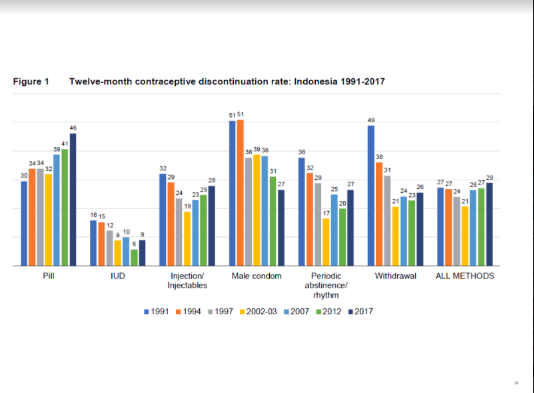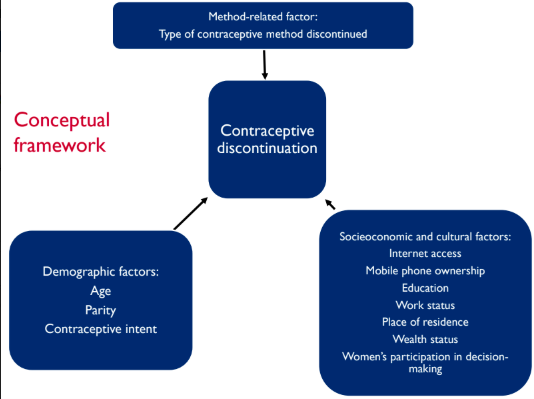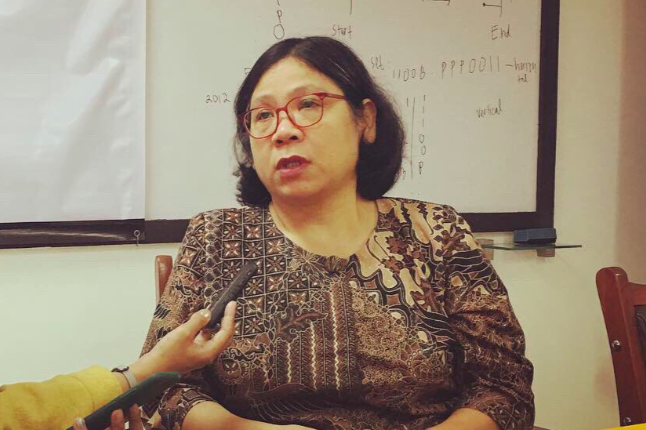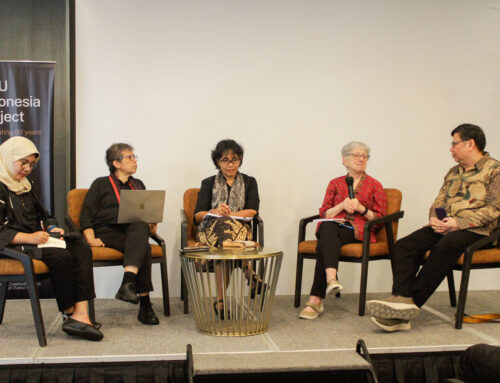Indonesia’s fertility rate has declined smoothly during most of the New Order up to the early Reformation era (1971-2000). However, the data shows that there has been a stagnation in the fertility rate since 2000 and an increase in contraceptive discontinuation rate since around the same time. What factors contribute to contraceptive discontinuation in Indonesia? This question was discussed in a study by Omas Bulan Samosir, Ayke Soraya Kiting, and Flora Aninditya and was presented in the first FKP event in August, hosted by Lembaga Demografi FEB UI.
 Four waves of Indonesia’s Demographic and Health Survey (IDHS) show that the twelve-month contraceptive discontinuation rate has gradually increased from 20.7 in 2003-03 to 28.9 in 2009. The increasing trend of contraceptive discontinuation pose several risks to women in the forms of unintended pregnancies and the health problems that may come with it. In turn, this affects the government’s fertility and development goals in Indonesia.
Four waves of Indonesia’s Demographic and Health Survey (IDHS) show that the twelve-month contraceptive discontinuation rate has gradually increased from 20.7 in 2003-03 to 28.9 in 2009. The increasing trend of contraceptive discontinuation pose several risks to women in the forms of unintended pregnancies and the health problems that may come with it. In turn, this affects the government’s fertility and development goals in Indonesia.
 Previous literature show that there are several determinants of contraceptive discontinuation, which are categorized by the authors of this study into three main groups: method-related factors (e.g. modern and traditional methods), demographic factors (e.g. age, parity, contraceptive intent), and socioeconomic factors (e.g. media exposure, education, work status, place of residence, wealth, and women’s participation in decision making). Using IDHS, this study analyzed episodes of contraceptive use by women aged 15-49 before the survey to find which of the above factors are significant in determining contraceptive discontinuation in Indonesia. The study used univariate, bivariate, and multivariate statistical methods to analyse the data.
Previous literature show that there are several determinants of contraceptive discontinuation, which are categorized by the authors of this study into three main groups: method-related factors (e.g. modern and traditional methods), demographic factors (e.g. age, parity, contraceptive intent), and socioeconomic factors (e.g. media exposure, education, work status, place of residence, wealth, and women’s participation in decision making). Using IDHS, this study analyzed episodes of contraceptive use by women aged 15-49 before the survey to find which of the above factors are significant in determining contraceptive discontinuation in Indonesia. The study used univariate, bivariate, and multivariate statistical methods to analyse the data.
This study found that in comparison to other methods, pills have a higher hazard of discontinuation. As age increases, the hazard of discontinuation also increases. Use of internet, mobile phone ownership, and higher education is also linked to a higher hazard of discontinuation. On the other hand, an additional child reduces the hazard of discontinuity. Being employed, living in an urban area, being in the 4th wealth quintile, and participating in decision making also lowers the hazard of discontinuing contraceptive use. Based on these findings, the authors suggest that the government improve counselling and education for women about contraceptive methods and technology, not only to women who are pill users, older, unemployed, poorer, and do not participate in decision making, but also to those who are internet and mobile phone users, and are better educated.
For the complete presentation and Q&A session, please refer to the video and materials provided.





